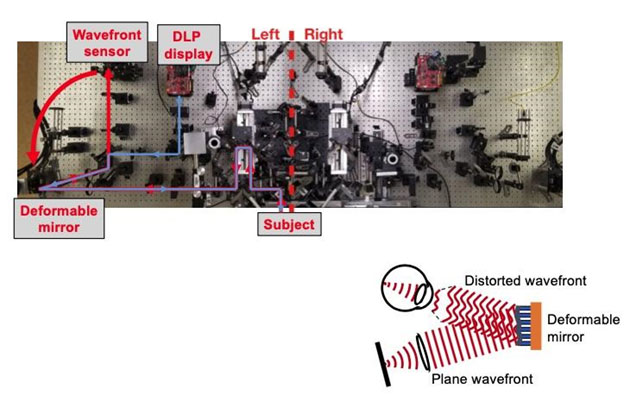
Advanced Physiological Optics Laboratory
Yoon Lab

The retinal image quality of the human eye is degraded by ocular aberrations (see Spatial Vision for more information). Our binocular adaptive optics (AO) vision system is a powerful tool to understand the role and impacts of the higher-order aberrations on vision (Sabesan et al. 2007).
The AO vision system is a noninvasive tool that corrects for the aberrations of the eye. It is also able to artificially induce aberrations in real time. Figure 1 is a layout of the system. Ours is a binocular system in that it has two identical monocular channels to independently correct or modify the aberrations of both eyes. The aberrations of each eye are measured using a Shack-Hartmann wavefront sensor. Each wavefront sensor is connected to a deformable mirror located at the pupil plane. The shape of the mirror's surface can be contoured to modify the wavefront, so that the subject perceives the visual stimulus under optical conditions that we’d like to study.

Figure 1. Binocular adaptive optics. Identical arms, divided by the midline, sense and correct the individual eyes’ aberrations. Major components are labeled. Red arrowed lines represent the wavefront sensing and correction path. Blue lines refer to the path that presents the visual stimulus. A conceptual diagram of a deformable mirror assuming a complementary shape to correct for the aberrated wavefront is shown below.